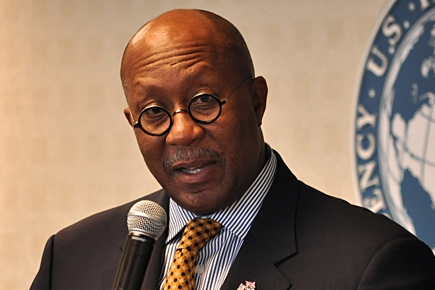Ivory Coast: Making “Made in Africa” last
If you’re ever shopping for a pair of jeans in an American mall, check the label. If it was made in, say, Lesotho – a tiny mountainous country surrounded by South Africa, with a population of around two million – you probably have the the African Growth and Opportunity Act (AGOA) to thank for it.
The AGOA, which was implemented in 2000, allows more than 6,400 products from eligible sub-Saharan African countries to enter the United States market duty-free. According to Lesotho’s National AGOA Strategy, the country’s annual garment exports to the US increased from about $129 million in 2001 to $330 million in 2015, representing 80% of total external demand for the country’s textiles and garments. With 44,000 employees, Lesotho’s garment industry is now the country’s largest private-sector employer.
The AGOA has underpinned other “Made in Africa” success stories, too. Some may complain that the AGOA favors petroleum products, but the figures speak for themselves. According to the 2016 AGOA report, released by the Office of the US Trade Representative, non-oil exports to the US under AGOA nearly tripled, from $1.4 billion in 2001 to $4.1 billion in 2015. Automobiles from South Africa and apparel from Kenya, Lesotho, Mauritius, and Swaziland were the leading exports.
The AGOA has also been criticized for excluding some agricultural products, for which Africans have a comparative advantage. The products that are not excluded face complex health and safety regulations, further hampering Africans’ ability to export agricultural products to the US. But bold, export-ready African countries have managed to overcome these hurdles. Namibia, for example, recently became the first African country to gain eligibility to export boneless (not ground) raw beef products to the US.
There is no doubt that the AGOA has created important opportunities for the countries involved. But it will not last forever. Having been extended for another decade last year, it is now set to remain in force until 2025. In other words, countries have just nine years left to ensure that the industries that have grown under the AGOA not only survive, retaining the thousands of jobs that have been created, but continue to grow.
Given that Africa now accounts for just 1% of America’s $350 billion textile and apparel market, there is plenty of room for expansion. But competition will be fierce. If the US eventually ratifies the Trans-Pacific Partnership trade deal, countries like Vietnam could erode Africa’s share of the US market in textiles and apparel.
The key to success for African countries will be to strengthen the skills base and build competitive industries in the textile and apparel sector. A country that could emerge as a key player is Ethiopia, which for the first time was named as a possible global sourcing destination in a 2015 McKinsey survey of 40 global chief procurement officers. The challenge for Ethiopia – and for other African countries – is to raise its status from sourcing option to business priority.
To do so, countries should take the invaluable lessons provided by the AGOA to stimulate their export industries’ growth and seize market share not just in the US, but also in other economies, including within Africa. In fact, the AGOA has helped enhance intra-African trade by enabling producers in different countries to create new, cross-border value chains that benefit all. Botswana, for example, now exports leather to South Africa, where it is processed into upholstery for luxury cars and exported to the US.
The African Development Bank also has a role to play, particularly in infrastructure development. By promoting regional integration, improved infrastructure can enhance trade and support skills development. Here, the AfDB’s Industrialize Africa strategy, which emphasizes regional value chains, will be particularly valuable, as it recognizes the opportunities that industries in one country can provide to those in neighboring economies.
At the same time, the AfDB must continue working to help meet demand for trade finance in Africa, currently estimated at $120 billion, with a focus on export-oriented small and medium-size enterprises (SMEs). Important strides have already been made. The AfDB’s Trade Finance Program, established in February 2013, has so far supported more than 85 domestic banks in 27 African countries, catalyzing approximately $3.4 billion in trade in vital sectors such as agriculture, manufacturing and construction, and energy. More than 60% of the transactions involved SMEs.
At last month’s Ministerial AGOA Forum, African trade ministers recognized the urgent need to plan ahead, committing to the creation of a task force to outline strategies for US-Africa trade and investment relations beyond 2025. This is a good start. But the clock is ticking, and Africa’s AGOA privileges will soon be eliminated. We must be ready.
- Moono Mupotola is the director of the NEPAD Regional Integration and Trade Department at the African Development Bank.




